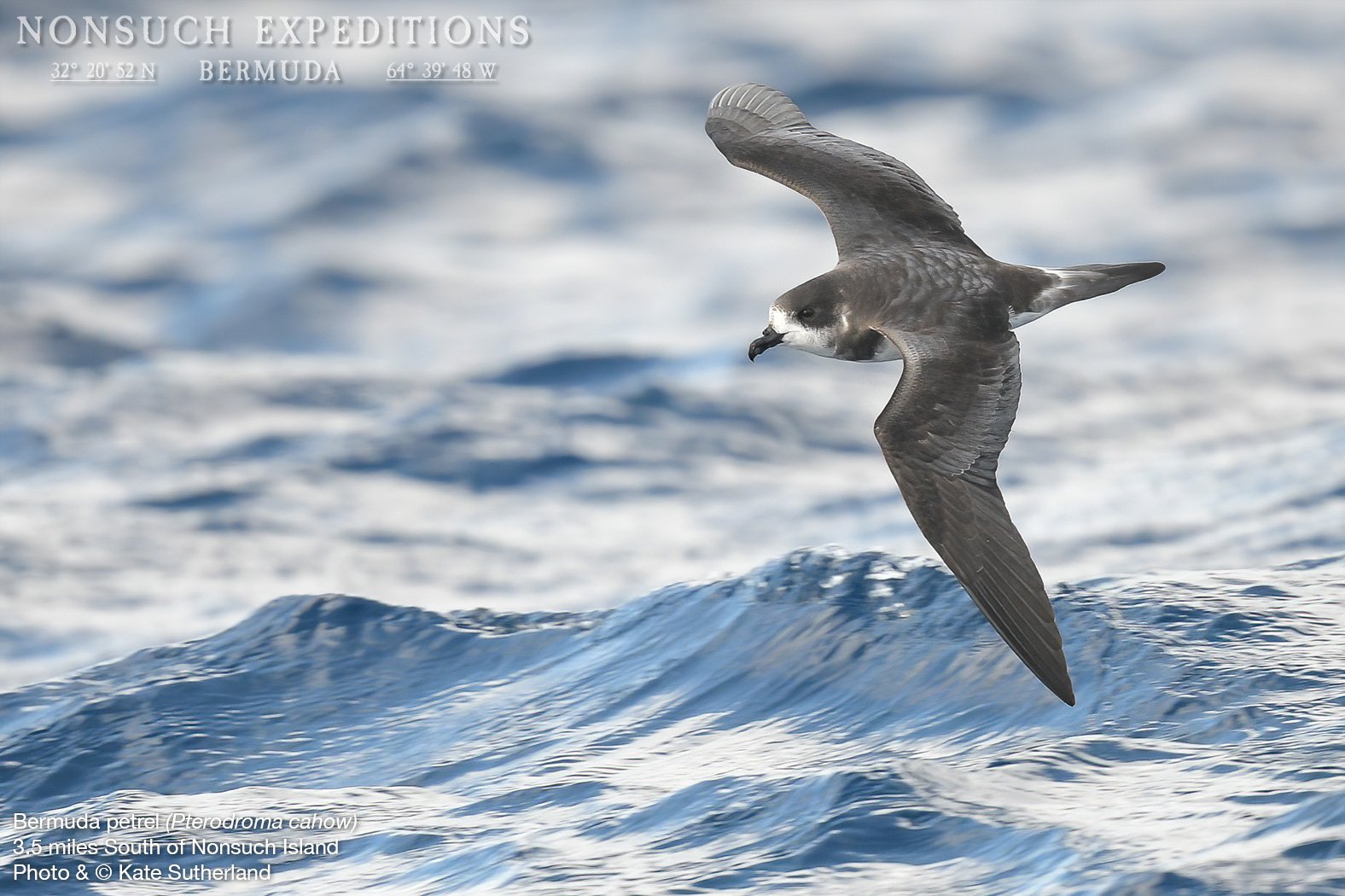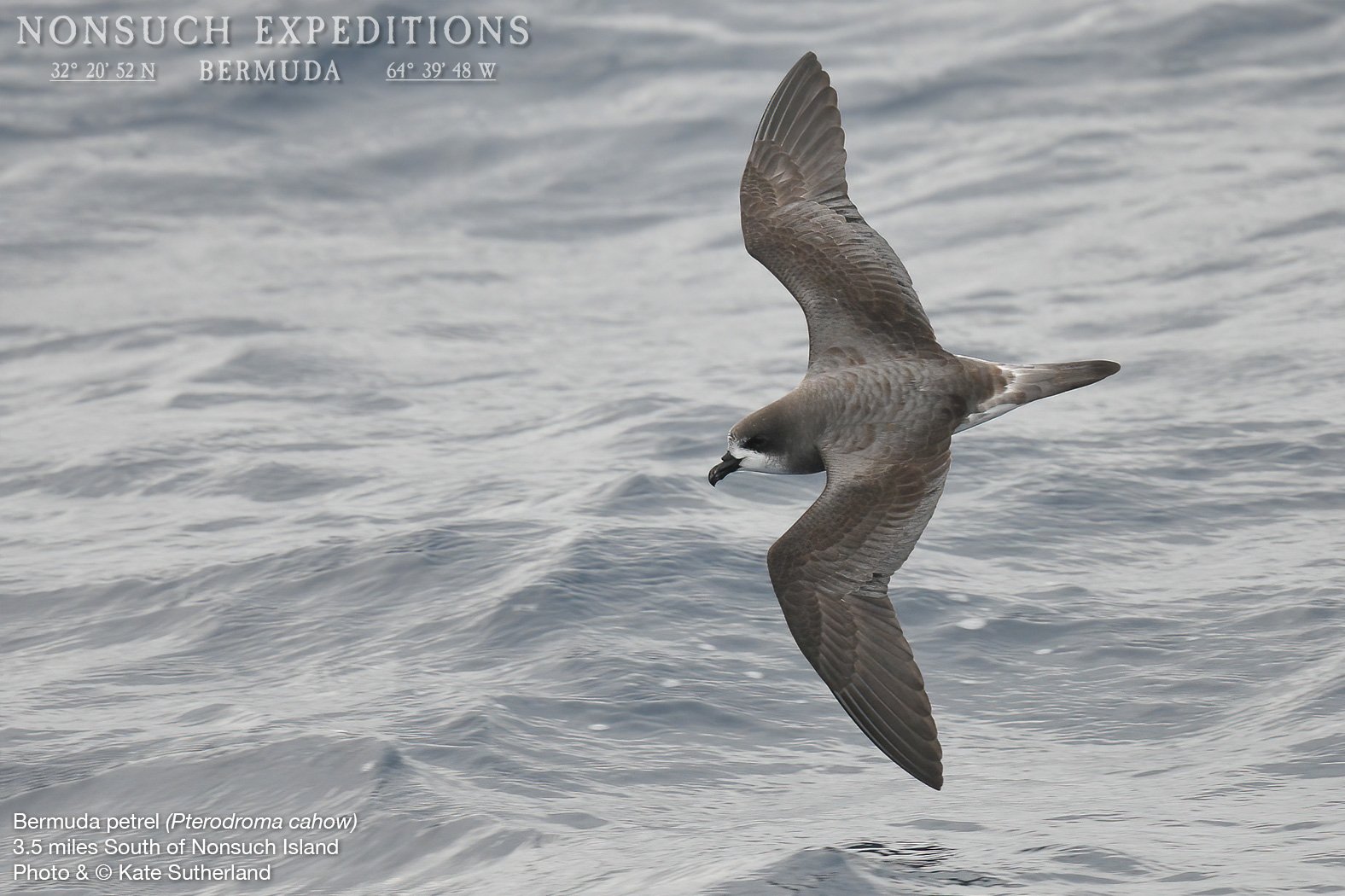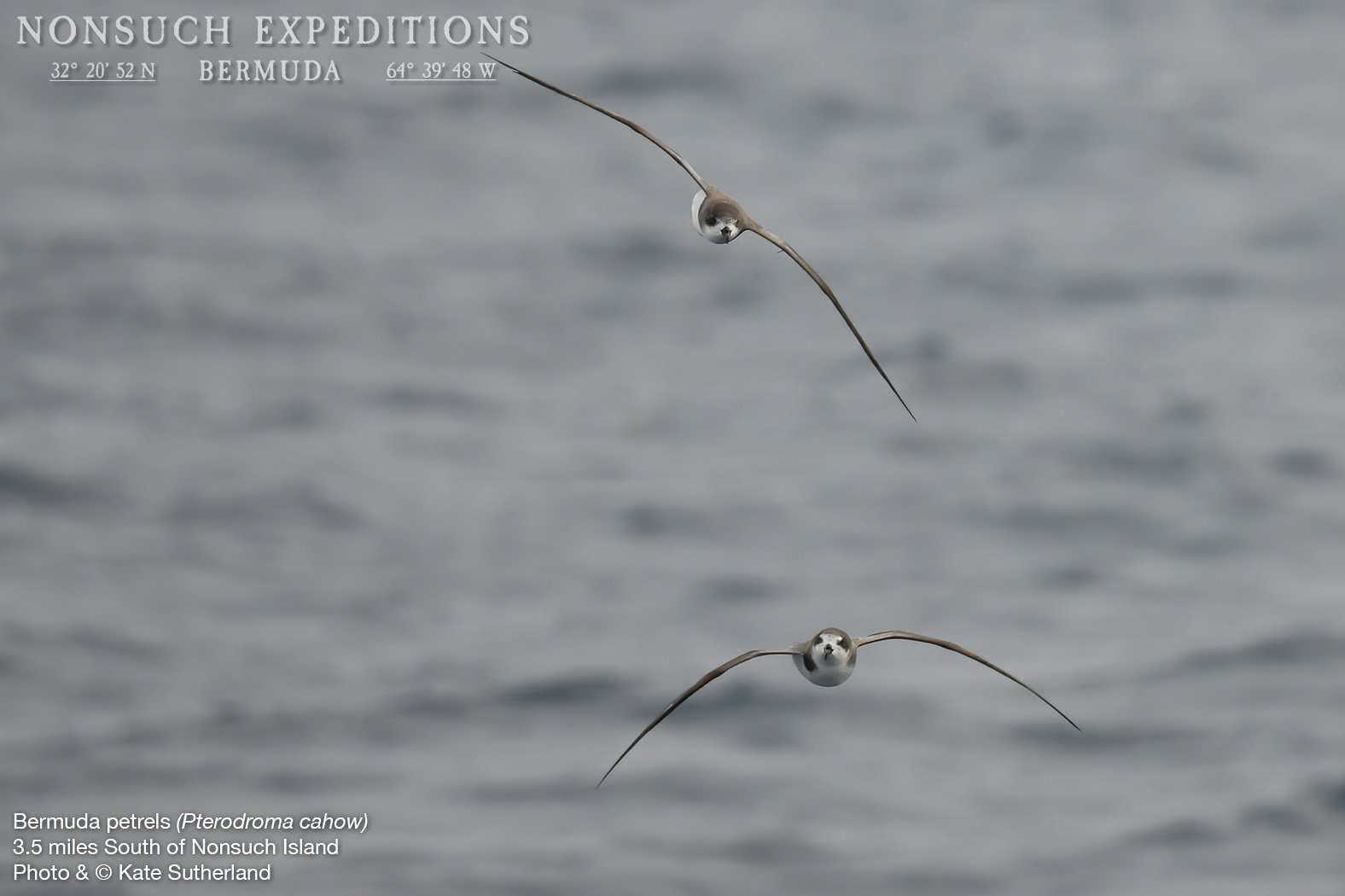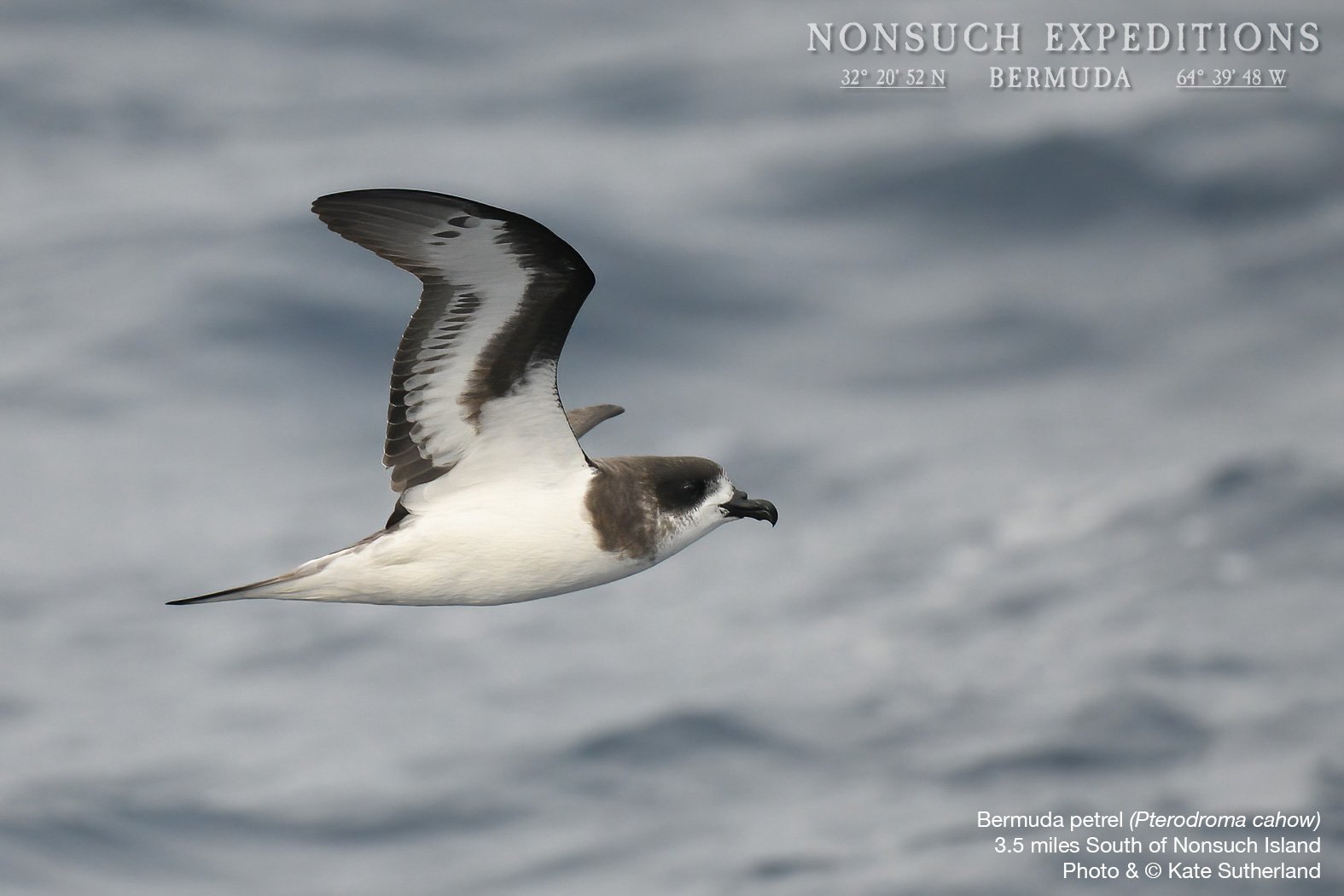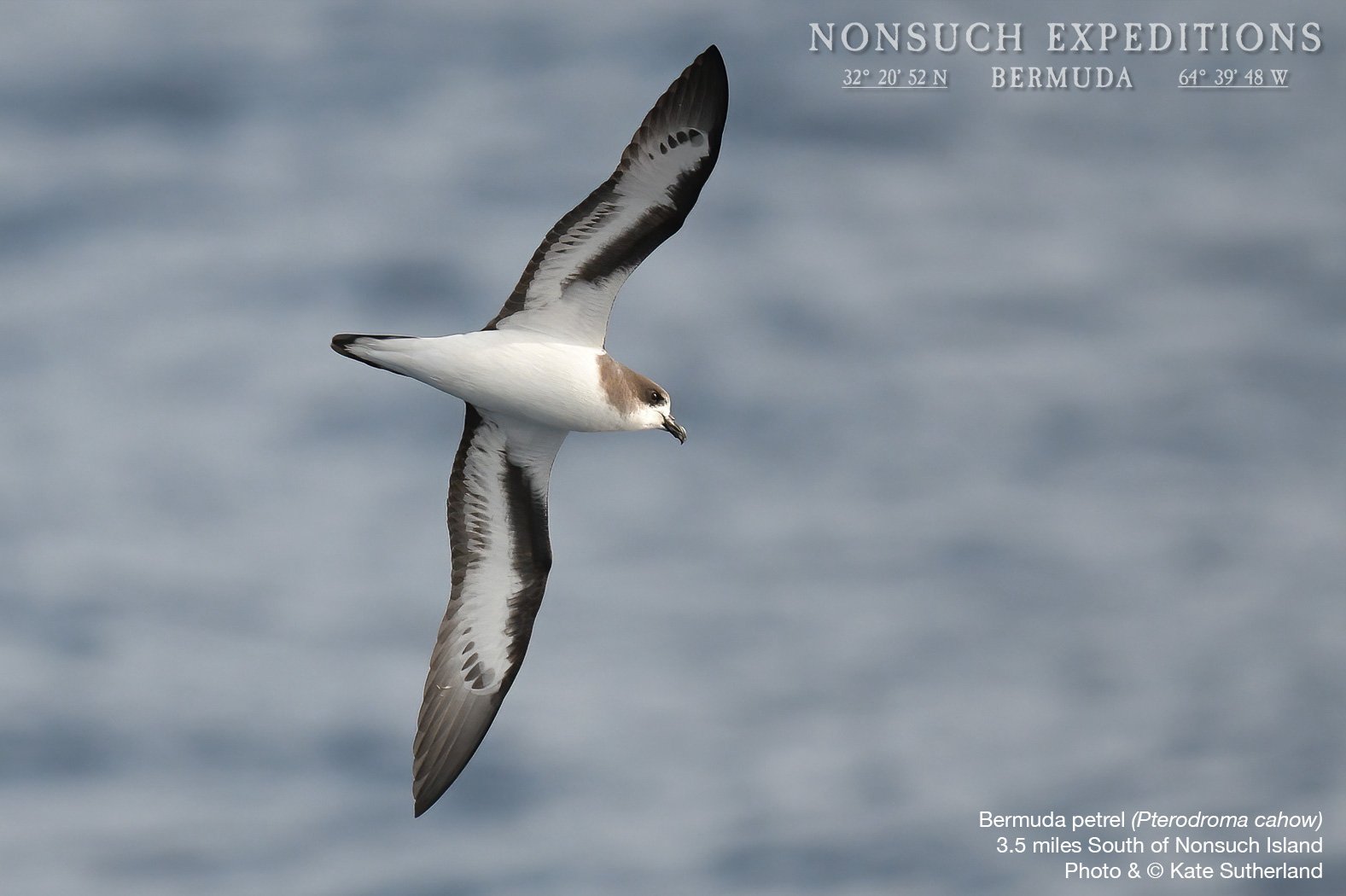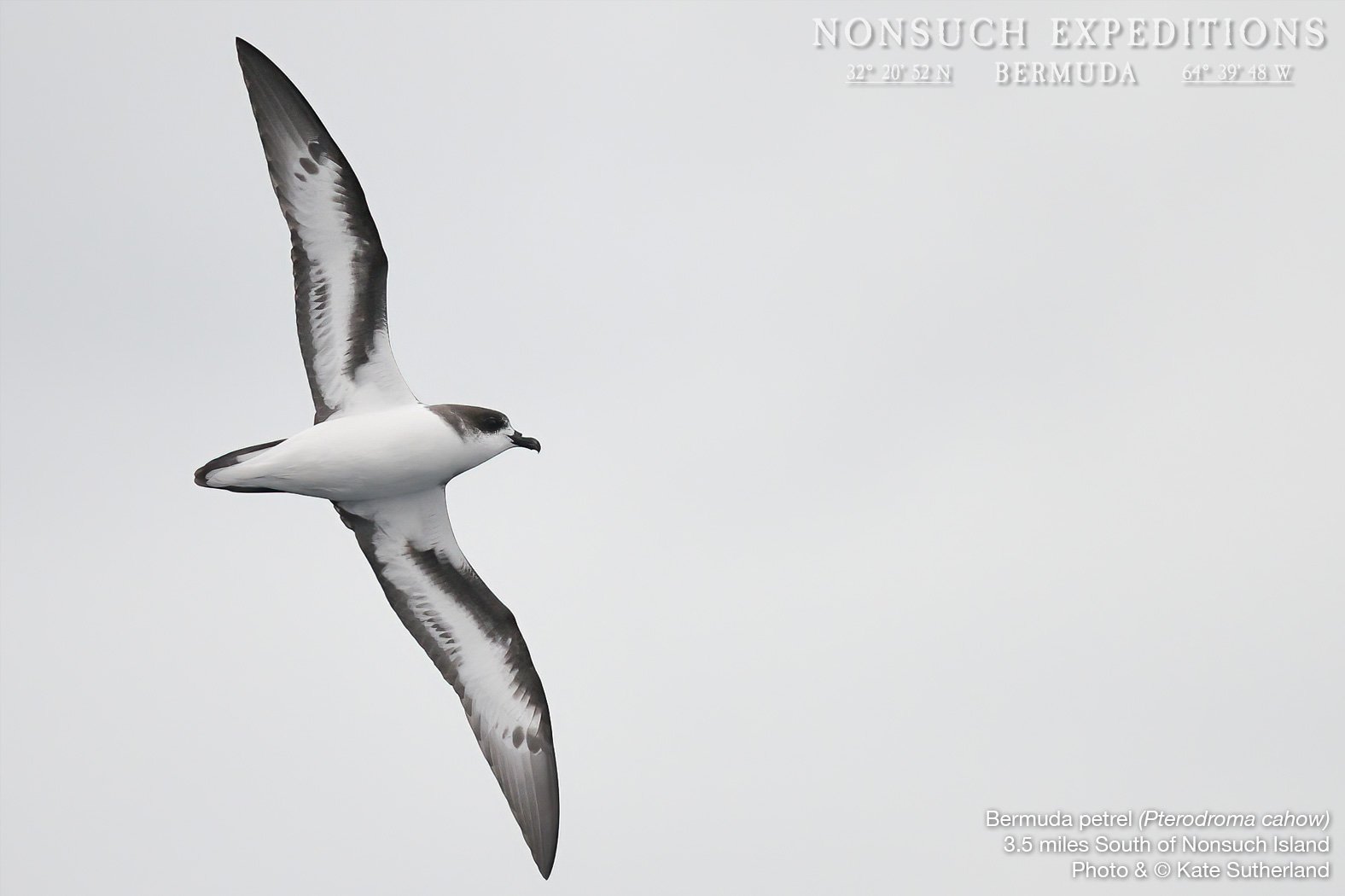This current (2022 / 2023) breeding season was affected by the 2022 Hurricane Season, with 2 hurricanes closely missing Bermuda. Hurricane "Earl" passed only 82 miles southeast of the island on September 8th to 9th as a Category 2 storm. Whilst the winds on Bermuda gusted only to 67 mph, large ocean swells produced by the storm still caused some erosion on the South Shore and the Cahow nesting islands.
Hurricane Repair Team: Nonsuch Expeditions J-P Rouja with DENR’s Peter Drew and Jeremy Madeiros.
The much more powerful Hurricane "Fiona" passed only 112 miles west of Bermuda on the 23rd of September as a Category 4 storm with sustained 140 mph winds. Despite the distance, winds on Bermuda gusted to 113 mph, knocking out power over most of Bermuda and causing damage to structures and trees. In addition, The South Shore of Bermuda was impacted by huge storm waves of 25' to 35', Causing considerable erosion and flooding. Some of the Cahow nesting islands were badly affected by the huge waves during hurricane "Fiona", with a number of the concrete nest burrows damaged or filled with rocks and debris, particularly on Green Island and Long Rock. However, thanks to help from Peter Drew and JP Rouja, all nests were repaired with concrete barely in time for the return of the first Cahows, despite prolonged windy, rough conditions hindering the work during much of October.
The first Cahows were recorded back in their nest burrows quite early on the 16th to 18th October, with the entire breeding population back by the beginning of November. Windy, rainy weather continued through most of the November courtship period, although the windy weather favored the courtship activity of these tough pelagic seabirds.
This resulted in good sightings of near-record numbers of Cahows during pelagic birding trips on the "Endurance" boat. These trips were carried out by both the Bermuda Audubon Society and Robert Flood's "Cahow Experience" (see slideshow above with photos by Kate Sutherland) which combines pelagic boat trips to see Cahows on the open ocean, a tour of Nonsuch Island and a visit to the Cahow nesting colonies there, and land birding trips to see the wide range of migrant and resident landbirds to be found on Bermuda during the autumn period.
After the cahows left and returned to the open sea for what is known as the "Pre-egg laying period" during the month of December, further improvements were made to over 20 Cahow nest burrows on Nonsuch Island and Horn Rock. The first returning adult Cahows were then recorded on Green Island by the 30th December, and we are now waiting for the imminent return of the rest of the population in early January 2023 to lay their single eggs and begin the 53-day incubation period.
Although it is still too early to know the exact number of confirmed breeding pairs until all birds have returned to lay their eggs (only pairs that produce an egg, whether it hatches or not, are counted as actively breeding pairs), it looks like 2022s record of 156 breeding pairs will be easily exceeded, with hopefully at least 8 new pairs likely to come "on-line" and produce their first eggs. One new development of note is that prospecting visits to the nesting colonies on Nonsuch by newly returned, young male Cahows continued through much of November and the exodus period in December. This is highly unusual, as most prospecting by young adults looking for nest sites does not occur until February and March. It will be interesting to see whether this is a one-time event or is new behavior related to the continuing increase in numbers of nesting Cahows.
Watch the CahowCam LIVE Streams here
Jeremy Madeiros | Chief Terrestrial Conservation Officer


